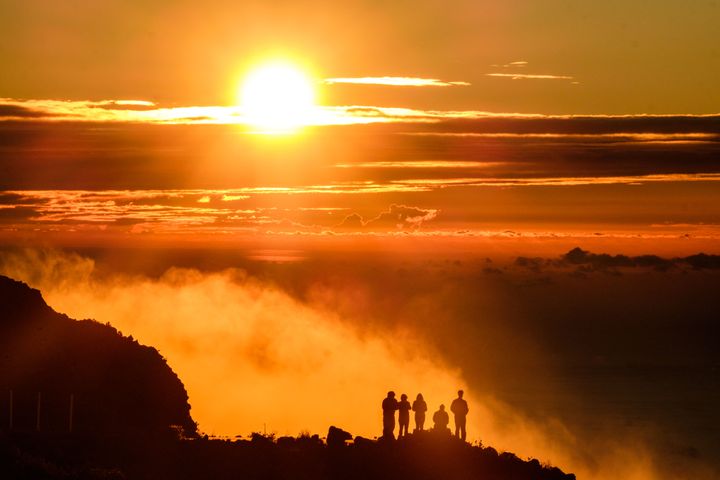
Friends sharing a sunset view on the high peaks of Haleakala off of Crater Road.
Hawai'i's Haleakalā National Park on the island of Maui is one of those unique places where, in the same day, you can stand above the clouds and beside the sea while traveling through a variety of microclimates in between. "Haleakala" is the name of a giant shield volcano, where according to legend, the demigod Maui stood to ensnare the sun releasing it only after it agreed to bestow additional hours of sunlight to the island each day.
From the 10,023-foot summit to sea level is just 38 miles stretching across a world of alpine, sub-alpine scrubland, and dry forest zones all the way to the lush tropical rainforest areas full of waterfalls and streams in the Kīpahulu coastal region. Each of these areas are distinct and wonderful in their own special way and that’s what we want to share here – some of the most memorable places to explore in Haleakala.
TOP OF THE CRATER
The opus of this national park is found in the summit area of the Haleakalā Crater. Standing 10,023 feet above sea level, Haleakala is the highest point on the island – there you are literally on the rooftop of Maui. The viewpoint is most popular at sunrise when the dawn light bursts onto a blanket of clouds that eventually gives way to a colorful cinder-cone landscape sprawled out before you. On a clear morning, you can see the islands of Molokai, Lanai and the Big Island off in the distance.
To get there you will need to head out sometime during the 3 ‘o clock hour (am) to start the two-hour drive up the Haleakala Highway (HI 37) to the top of the crater. After waiting awhile in your car with the heat blasting and your fingers crossed that the weather will accommodate a favorable view, excitement ramps up in the parking lot as the sun fixes to burst over the horizon, stealing the show. If you stay around for a little while afterward, beautiful color intensifies on the landscape – a sight you really won't want to miss.
If middle-of-the-night exploration isn’t your thing, sunset is also a lovely time to head onto the crater rim. Not long after the sun drops behind the horizon, immaculate skygazing opportunities begin to appear including sun halos, moonbows, planets, and stars.
Either way, making a trek to the top of Haleakala isn’t an excursion; it is an event – and should you choose to face the sunrise, it is worth every precious nanosecond of lost sleep! As of February 2017, advanced reservations are needed for a trip to the summit so plan ahead.
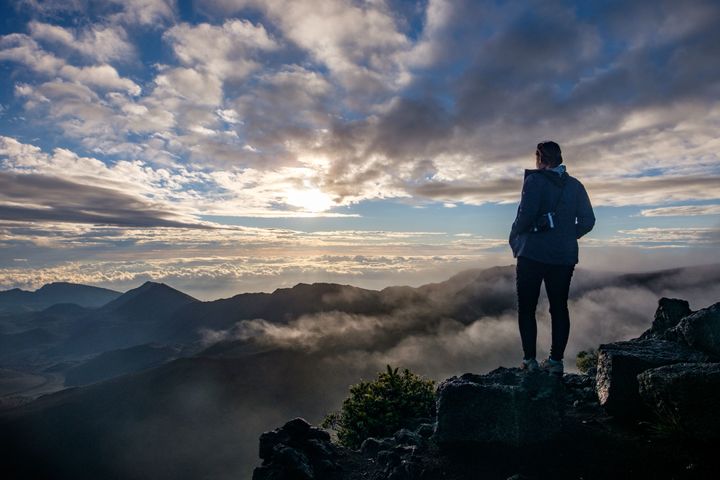
Standing above the clouds atop Maui's Haleakalā Crater during sunrise.
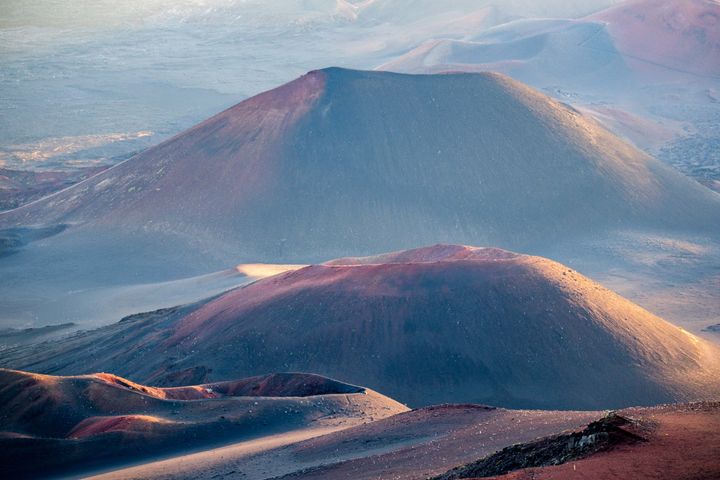
View from the top of the Haleakala Crater just after sunrise.
INNER CRATER
The 24,719-acre wilderness inside the Haleakala Crater passes through a wild terrain that shows colorful, sculpted landscapes and unusual vegetation the entire way. To get a taste, you'll want to plan a day hike or backpacking adventure to see for yourself what makes this one of the most popular experiences in the park.
Our recommendation is to spend a full day traversing the 11-mile Sliding Sands Trail. Desolate and artful at every turn – it is a photographer’s paradise and a hiker's dream. Along the way, you will see endangered Hawai’ian geese (the state bird, called nene) and the endangered silversword plant (ahinahina) which is endemic to the crater and looks electric against the volcanic landscape. Virtually alone in such a vast environment, you will find yourself marveling at the stillness and wondering where on Earth you actually are... it is without a doubt one of America’s most epic hiking trails!

Surreal terrain washed with rich color on the cinder-cone landscape of the Haleakala Crater.
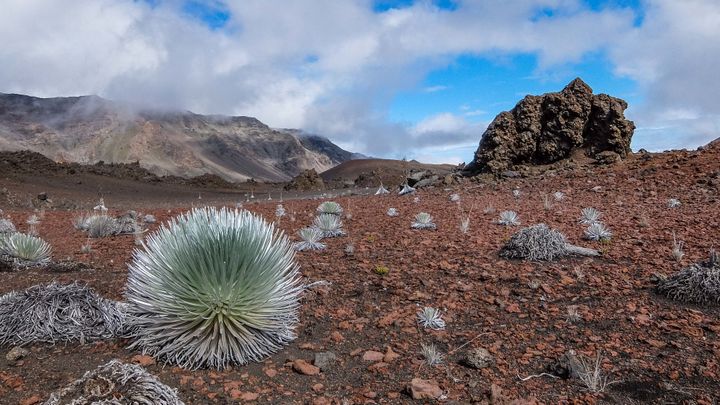
Endangered silversword blooms found along the Sliding Sands Trail.
THE COAST
In the Kipahulu district, stretching down the east side of the island, rainforest and water features converge to protect countless wildlife, birdlife, and insect species inside of a rich jungle ecosystem. The Pools of Ohe’o, AKA the “Seven Sacred Pools,” are the top draw to the area. Fed by waterfalls, the tiered plunge pools cascade like curtains feeding into the Pacific Ocean.
While the pools are the draw of the area, the day hiking is fantastic as well. The easiest to tackle is the .5-mile Kuloa Point Trail leaving from the Kipahulu Visitor Center that winds to the mouth of the Ohe'o Gulch where you can take in sweeping coastal views of Kuloa Point.
Heading deeper into the green heart of the park is the popular 4-mile (round trip) Pipiwai Trail where you will pass through dense vegetation thrusting you upon beautiful views of waterfalls and greenery, past an enormous Banyan Tree, until you reach a dense forest of bamboo at the top of the trail where you can get lost for awhile in an ancient landscape. This is a trail not to miss!
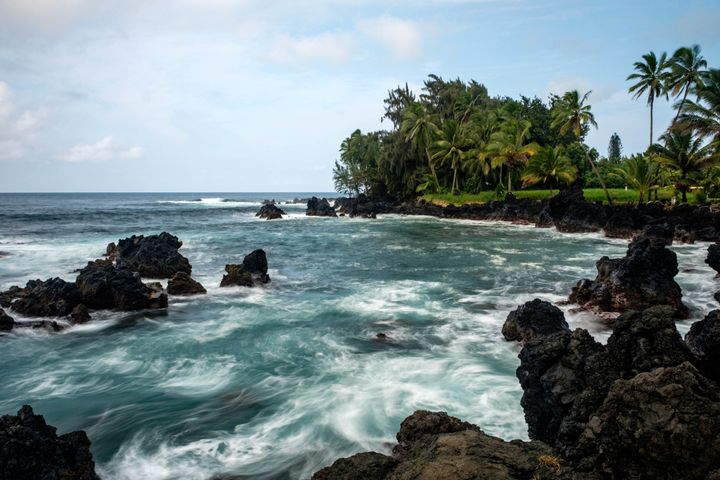
Waianapapa Beach on the Road to Hana

Into a bamboo forest along the Pipiwai Trail in the Kipahulu district of the park.
THE ROAD TO HANA
To get from the crater and wilderness areas of Haleakala to the coastal area in Kipahulu you travel the famed Hana Highway (Hwy 31) from Maui’s northeastern shore. The road leads to the small town of Hana – an unspoiled frontier that is known as the "most Hawaiian town on the islands."
Along its 54-mile paved one-lane highway you will wind through a jungle paradise while immersing in native cultural experiences along the way. A couple of sites not to be missed:
Surf culture is alive and well at Ho'okipa Beach just a few miles from the start of your journey, where the swells are huge and the experienced surfers who ride them are happy.
The Halfway to Hana Stand (c. 1982) is a must stop along the road where you can refuel with coffee and snacks while picking up local Hawai’ian crafts to gift your loved ones and/or commemorate your adventure.
Check out a beautiful black sand beach at Waianapapa Beach, yet another gorgeous stop along the highway that is home to sea caves, blow holes, a natural sea arch, and shores made of black sand.
Bread stands are popular spot in the coastal areas of the park. Aunt Sandy’s Banana Bread in Keane is a local favorite. Hit it as early as you can, they sell every day!
You'll want to prep your patience on this drive. There are approximately 59 one-lane bridges and 620 curves slowing the course. Locals object to the idea of building two-lane bridges because it would change the character of the historic road, increase traffic, and cause visitors to speed through, negating the "journey is the destination" idea...but you are on Hawai'ian time after all, so sit back, relax, and enjoy the spirit of aloha!
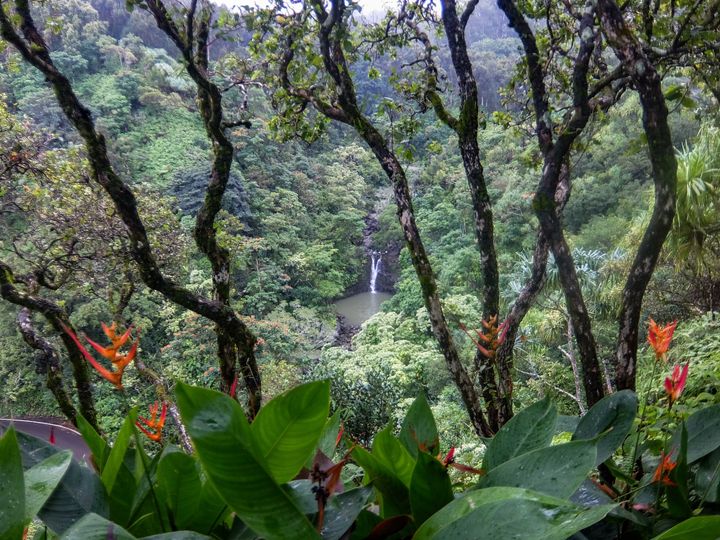
A beautiful scene at the Garden of Eden Arboretum on the Hana Highway.
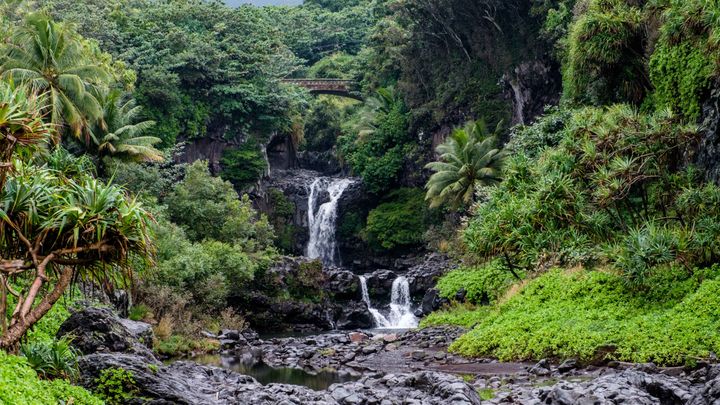
Waterfalls don’t need to be sought out on the Road to Hana... they are everywhere!!
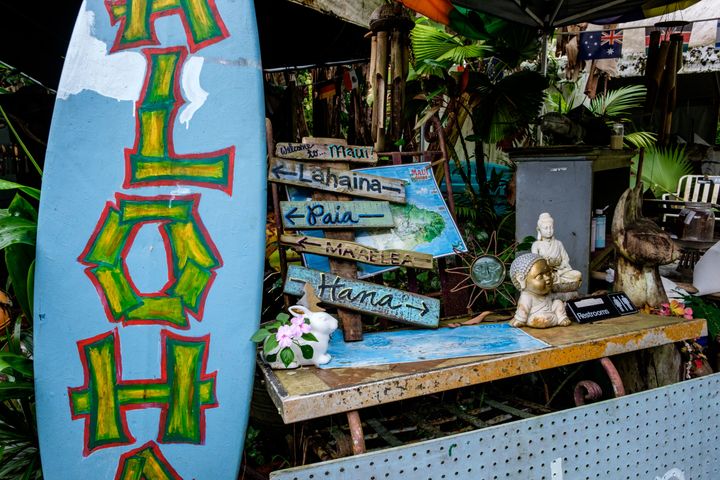
Cool Hawai’ian feel at the ‘Halfway to Hana’ stop.
